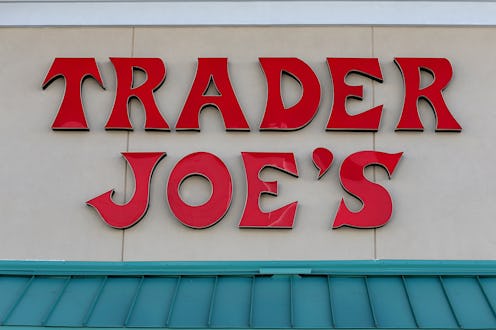Life
Some Of Your Favorite Trader Joe's Products Are About To Get A Packaging Makeover

From everything bagel seasoning to pumpkin spiced flavored anything, Trader Joe’s is known for giving the people what they want. So, what do the people want now? Less plastic. In an effort to make their stores and products even more sustainable, Trader Joe’s is cutting down on plastic packaging starting this year.
According to the February edition of the store’s Fearless Flyer newsletter, spotted by SFGate, Trader Joe’s announced plans to cut down on their the plastic packaging. (Bustle reached out to Trader Joe’s for more information but did not hear back prior to publication.) “As we fulfill these steps in 2019, on an annual basis, we are eliminating more than 1 million pounds of plastic from our stores,” the Trader Joe's flyer states. “Thank you; we're listening.”
Trader Joe’s also posted a sustainability announcement to their site on December 31, 2018. “Taking into consideration our customer feedback and our desire to be great neighbors, we have been taking a careful look at our packaging and the opportunities that exist to make improvements, with respect to sustainability,” the announcement states noting the brand’s emphasis on sustainability. “While most of the plastic in our packaging has the highest recyclability acceptance rate in the U.S.,” the announcement continues, “reducing the amount of plastic packaging in our stores is another important focus of our sustainability.”
Here are some packaging improvements you can expect to see from Trader Joe’s, per their website:
- Selling more loose produce items versus bunches in plastic packages, including apple, pear, and potato bags.
- Replacing styrofoam trays in the meat section with highly recyclable ones
- Replacing plastic sleeves on their greeting cards with a renewable, compostable material.
- Swapping plastic flower bags for bags made from renewable material.
- Getting rid of non-recyclable plastic and foil pouches from tea packages
This move comes shortly after a number of complaints from shoppers questioned the store’s eco-friendliness. As SFGate reported in December, customers were complaining about the excessive amount of plastic in Trader Joe’s produce section. “The packaging is so overwhelming and you can’t get away from it,” said Catherine Homsey, the founder of San Francisco’s Joy of Zero Waste a which helps residents reduce consumption. “So much is sold in those plastic clamshells. After learning stuff doesn't really get recycled, I thought I better not shop there.”
Trader Joe’s is no stranger to sustainability. If you’ve ever been through the checkout line, it’d be nearly impossible to see the reusable Trader Joe’s tote bags they sell. Cashiers also don’t ask if you want paper or plastic as they only offer paper bags. Beyond the checkout lane, Trader Joe’s has been working to eliminate plastic produce bags. Since March 2018, the stores have started swapping them out for eco-friendly, compostable bags to put loose produce in. Julia Ritter, a member of Trader Joe’s customer relations team, told 5th Branch “Trader Joe’s shoppers want the chain to be ‘greener.’”
Trader Joe’s is far from the only grocery chain working to make their stores more sustainable. In the spring of 2018, supermarkets in the UK pledged allegiance to a new “UK Plastics Pact”. Per the Telegraph, the sustainability pact banned all single-use plastics not “deemed absolutely necessary” or made from recyclable materials from grocery stores by 2025. Everything from single-use plastic grocery bags to ketchup bottles to yogurt cups would fall under unnecessary plastics the pact bans. Over 40 chains have publicly co-signed the pact’s initiative, promising at least two-thirds of their plastics will be recycled or composted, about a 20 percent increase from the current 45 percent.
“The movement’s success will depend heavily on consumers successfully increasing the amount of plastic the recycle at home, however,” Telegraph notes. The same is true for Trader Joe’s recent initiatives. As brands continue to make it easier for customers to shop and live more sustainably, it’s necessary for customers to follow through once they leave the store.